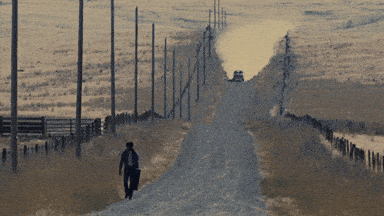- The Scarlet Letter
- Posts
- Buddha Found South of Livingston Ave
Buddha Found South of Livingston Ave
And Sidewalks.

Are you interested in sponsoring the best local newsletter on the planet? Reply to this email to help your organization reach hundreds of thousands of engaged Columbusites.
Top of Mind
A Statement from The Scarlet Letter
This weekend, hate marched through the Short North, a blatant act of intimidation by cowards hiding their faces under masks, and waving swastikas, Spraying mace into people’s faces. Let’s be clear: this wasn’t free speech it was hate, and it has no place in Columbus.
But our city didn’t stay silent. On Sunday, the community came together, reclaiming our streets with resilience and unity. Their message was simple: hate won’t win here.
We urge our leaders to act protect our public spaces, hold aggressors accountable, and create policies that safeguard our community from such hostility. To everyone who stood strong, opened their doors, and stood up for love over fear, thank you.
Columbus is stronger together. Let’s keep proving it.
– The Scarlet Letter
Hidden Gem in Columbus: The Watlao Buddhamamakaram Temple

photo from Columbus Navigator
Columbus is full of surprises, but even seasoned city explorers might not know about the Watlao Buddhamamakaram Temple a vibrant and awe-inspiring treasure tucked away on the city’s east side. If you’re willing to venture off the beaten path, this serene sanctuary offers a glimpse of Laotian culture and spirituality right in our backyard.
Nestled at 3624 Bexvie Ave, just south of Livingston Avenue, the temple has been a beacon of the local Laotian community since its founding in 2009. Recent renovations have made it even more stunning, with fresh paint and intricate plasterwork highlighting its colorful, intricate design. Golden accents sparkle like licks of fire, and the long, winding dragons that adorn the shrine add an air of majesty that feels both otherworldly and inviting.
But let’s be clear: this isn’t your next Instagram backdrop. The temple is a sacred space, first and foremost. While visitors of all backgrounds are welcome, it’s essential to approach the site with respect for its purpose as a place of worship. Services are conducted in Lao, so participation may involve a language barrier—but that doesn’t diminish the sense of peace and craftsmanship that envelops the grounds.

What sets Watlao Buddhamamakaram apart isn’t just its design but the tranquil energy it radiates. There’s a calmness here that feels worlds away from the bustling streets of Columbus, making it the perfect spot for a quiet moment of reflection or simply to marvel at its beauty.
For those interested in visiting, there’s ample parking available, and the site is easy to access despite its off the beaten path location. The temple remains a testament to the cultural diversity that makes Columbus so unique, and it’s an experience worth seeking out.
So, if you’re looking for a slice of tranquility with a side of stunning architecture, head to the Watlao Buddhamamakaram Temple. Just remember: this isn’t a tourist trap—it’s a treasure. Treat it as such.

Scarlet Letter Trivia
Question: The first-ever cargo flight in the United States landed in Columbus in 1910. What was its cargo?
A) Tires
B) 30 Rocks
C) Ten Bolts of Silk
D) Corn
Discovering the Path Forward: Columbus’s Sidewalk Renaissance—or Another Detour?

Imagine walking down a bustling Columbus street, only to find the sidewalk suddenly vanish, replaced by a muddy trail worn down by years of frustrated footsteps. If you’ve lived here long enough, this scene isn’t hard to picture it’s a reality for thousands of residents. But last week, something extraordinary happened. With the passage of the LinkUS levy, Columbus officially began a journey to reconnect itself one sidewalk at a time. Or so they say.

Michael De Bonis /WOSU
A City of Half-Sidewalks and Broken Promises
Let’s start with a question: Why does Columbus feel like a city where sidewalks are optional? The answer lies in our past. In the post war boom of the 20th century, planners built for cars, not people. Walking became passé, and sprawling suburbs took priority. Streets like Dublin Granville Road, now a hive of businesses and apartments, were developed with no regard for pedestrians.
Today, over a third of Columbus streets still lack sidewalks, leaving residents to improvise. Nearly 40,000 Franklin County households don’t own cars. For these families, sidewalks aren’t just a convenience they’re essential. Yet for decades, the city has pieced together random stretches of walkways without ever finishing the puzzle. The result? Columbus became a patchwork city where you’re either walking on smooth pavement or risking life and limb on the shoulder of a busy road.
Now, with LinkUS on the books, $60 million per year will supposedly fix this. But as we examined the details, we couldn’t help but ask: Will this bill actually deliver, or is it another shiny promise with no follow-through?
The Pitch vs. Reality
The city sold LinkUS as the sidewalk savior we’ve all been waiting for. Hundreds of miles of sidewalks, bikeways, and trails are on the menu, alongside improved bus transit. Officials even called the levy “transformational.” Transformational for whom, though?
Standing on a sidewalk that ends abruptly on Cooke Road, we couldn’t help but feel skeptical. How long will it take for the “piecemeal progress” to connect these disjointed stretches into a coherent system? And with construction costs skyrocketing up to $2 million per mile how much of that promised infrastructure will actually materialize?
One of the first projects announced, the Big Walnut Creek Trail in Gahanna, is a perfect example. Right now, the trail ends in a field. The city promises that LinkUS funding will finally extend it over I-270. But it’s hard not to wonder: How many more “trails to nowhere” are we funding before we see a fully connected system?

Follow the Money
Here’s where things get murkier. The levy isn’t just about sidewalks; it’s also funding rapid bus transit and other “transit-supportive infrastructure.” In theory, that’s great. In practice, it feels like an expensive game of urban Monopoly where taxpayers foot the bill for big projects that may not directly benefit them.
And let’s not forget: COTA ridership is still down post-pandemic. Was this levy really about meeting demand, or was it about optics? The Mid Ohio Regional Planning Commission is touting an unprecedented $50 million annual investment in trails and sidewalks. But when you spread that over dozens of projects, how far does it really go?
A Walkable Future—or a Fumbled Opportunity?
We’re not saying LinkUS is all bad. The potential is enormous. Prioritizing highrisk corridors like Cleveland Avenue and East Broad Street could save lives. And in a city with rising pedestrian deaths, that’s not a small thing. But potential doesn’t pay the bills or lay the sidewalks.
Columbus needs to prove that this time is different. Voters supported the levy, but patience will run thin if tangible results don’t follow soon. How long will residents have to wait before they see their tax dollars at work?
As we stand at the edge of yet another dead-end sidewalk, the path forward is anything but clear. Will LinkUS finally make Columbus a walkable city, or will it be another chapter in our long history of half-finished promises? Stay tuned. The journey has just begun, and we’ll be watching every step of the way.
🦃 Smoked to Perfection: Holiday Turkey from Smoked on High
This year, our friends at Smoked On High are pulling out all the stops! Choose from their signature smoked, succulent turkey breast or explore something new with their 100% Vaad-certified Kosher turkey breast.
Both options are slowly smoked over shagbark hickory wood in their rotisserie smokers, promising a rich, smoky flavor that’s perfect for Thanksgiving, Hanukkah, or any festive gathering. No stress is required—these turkeys come pre-sliced and ready for the table.
🦃 Click here to gobble up all the details and secure your order before it’s too late.
Trivia Answer:
C: 10 Bolts of Silk Flying from Dayton to Columbus, this 65 mile journey was the first commercial use of an airplane

Goodbye

